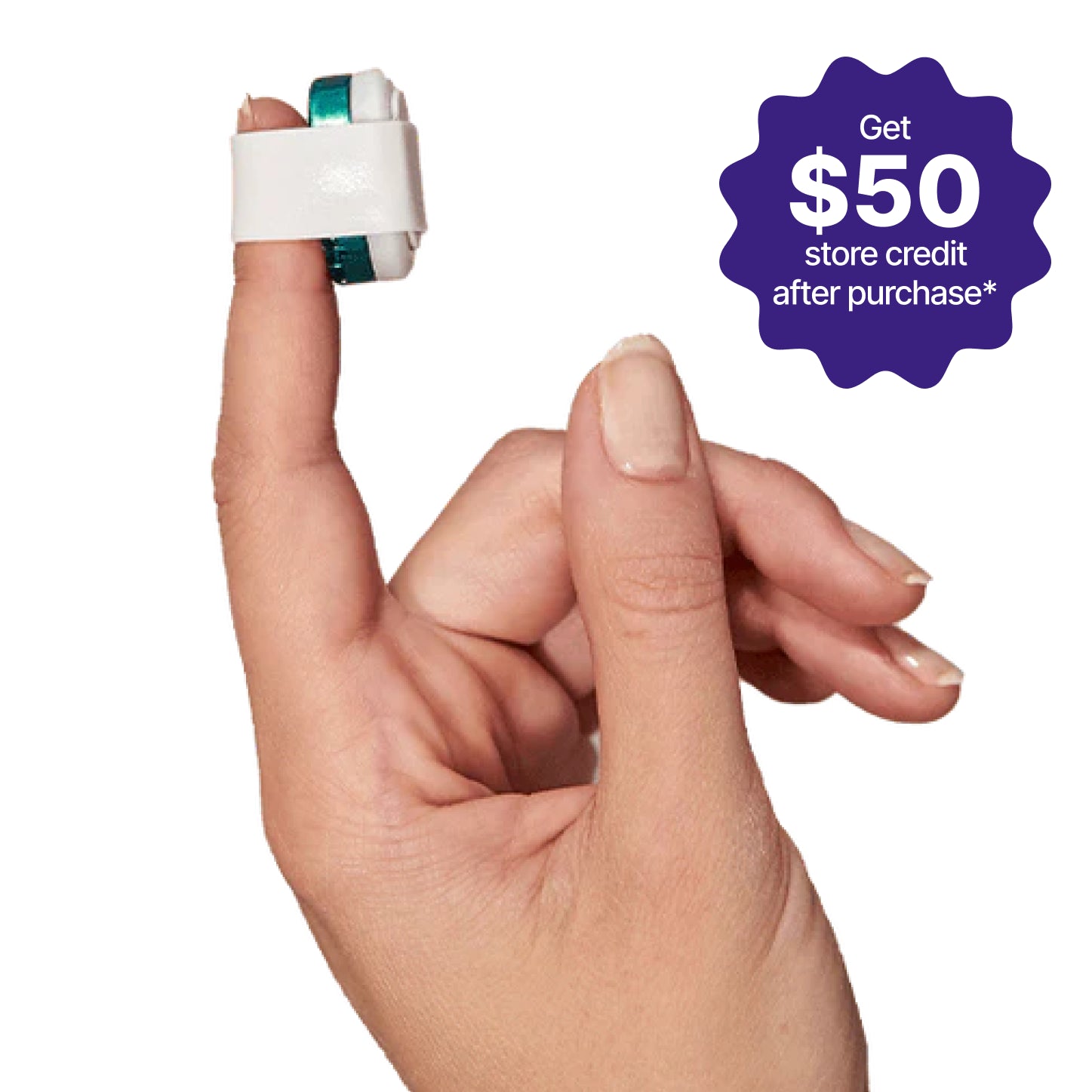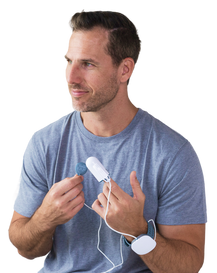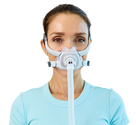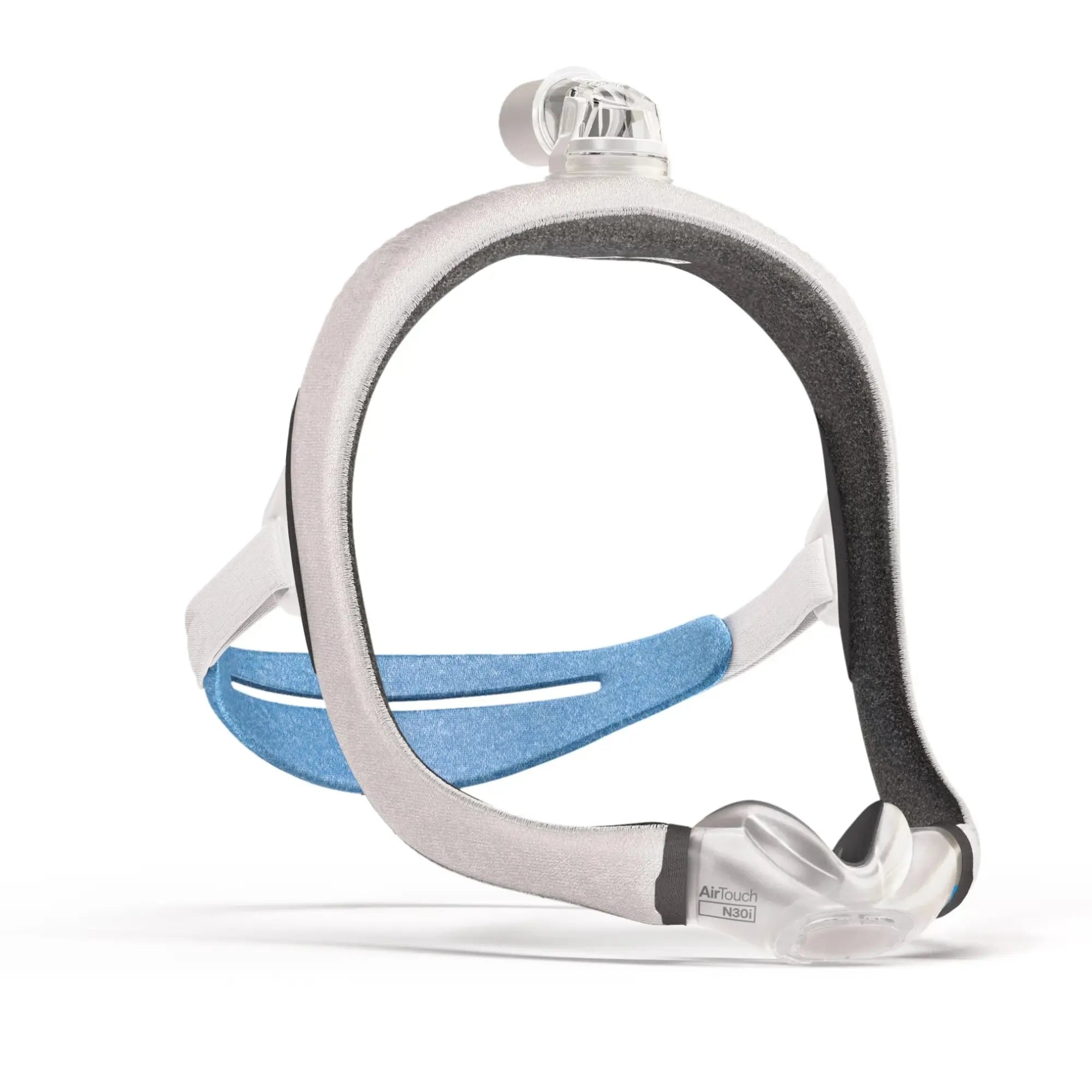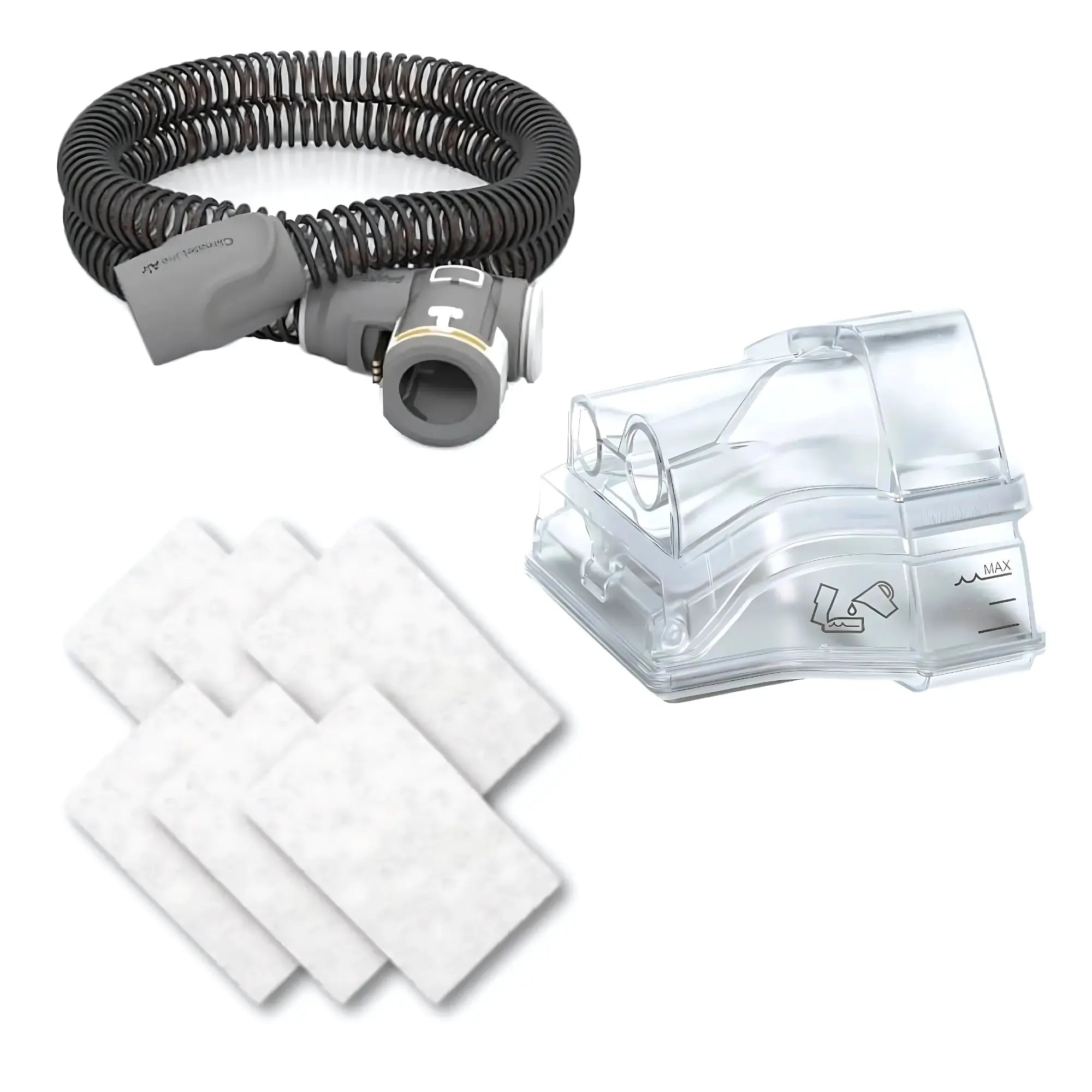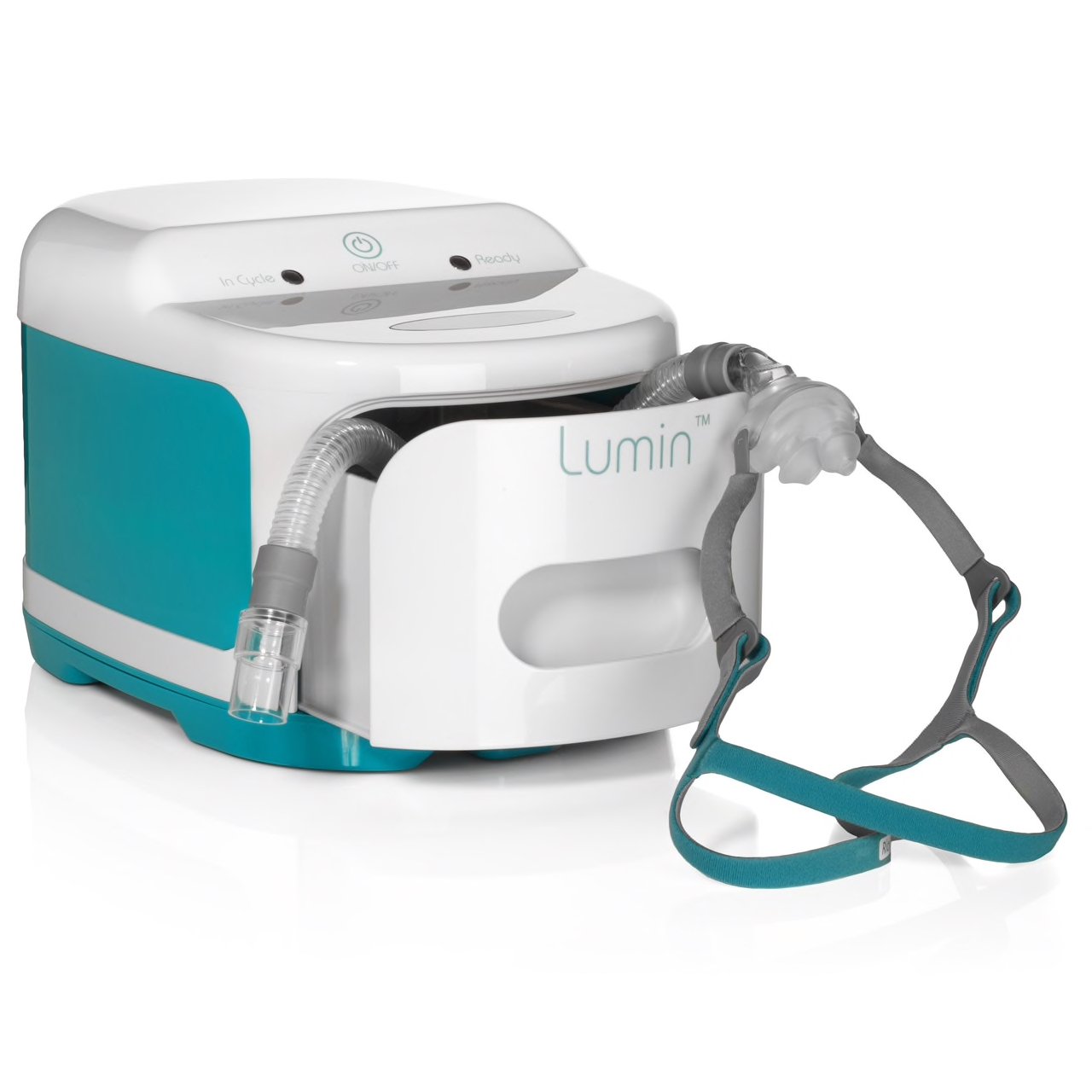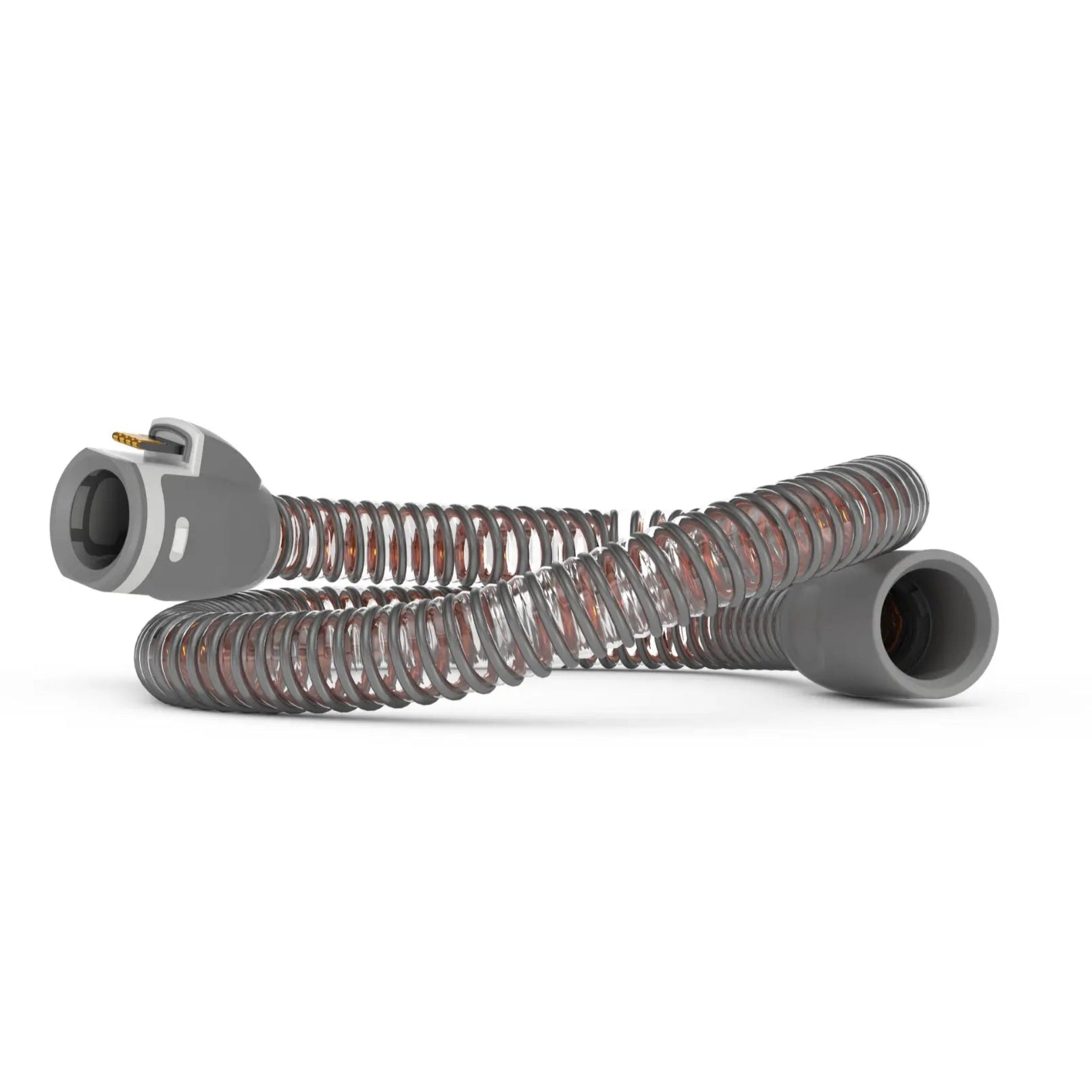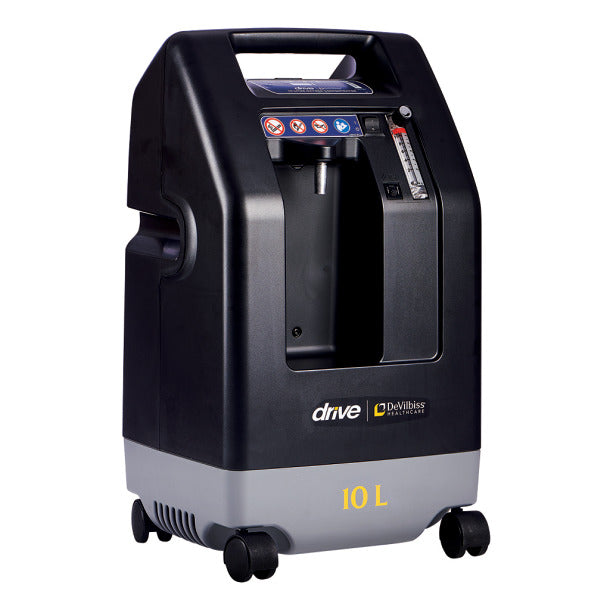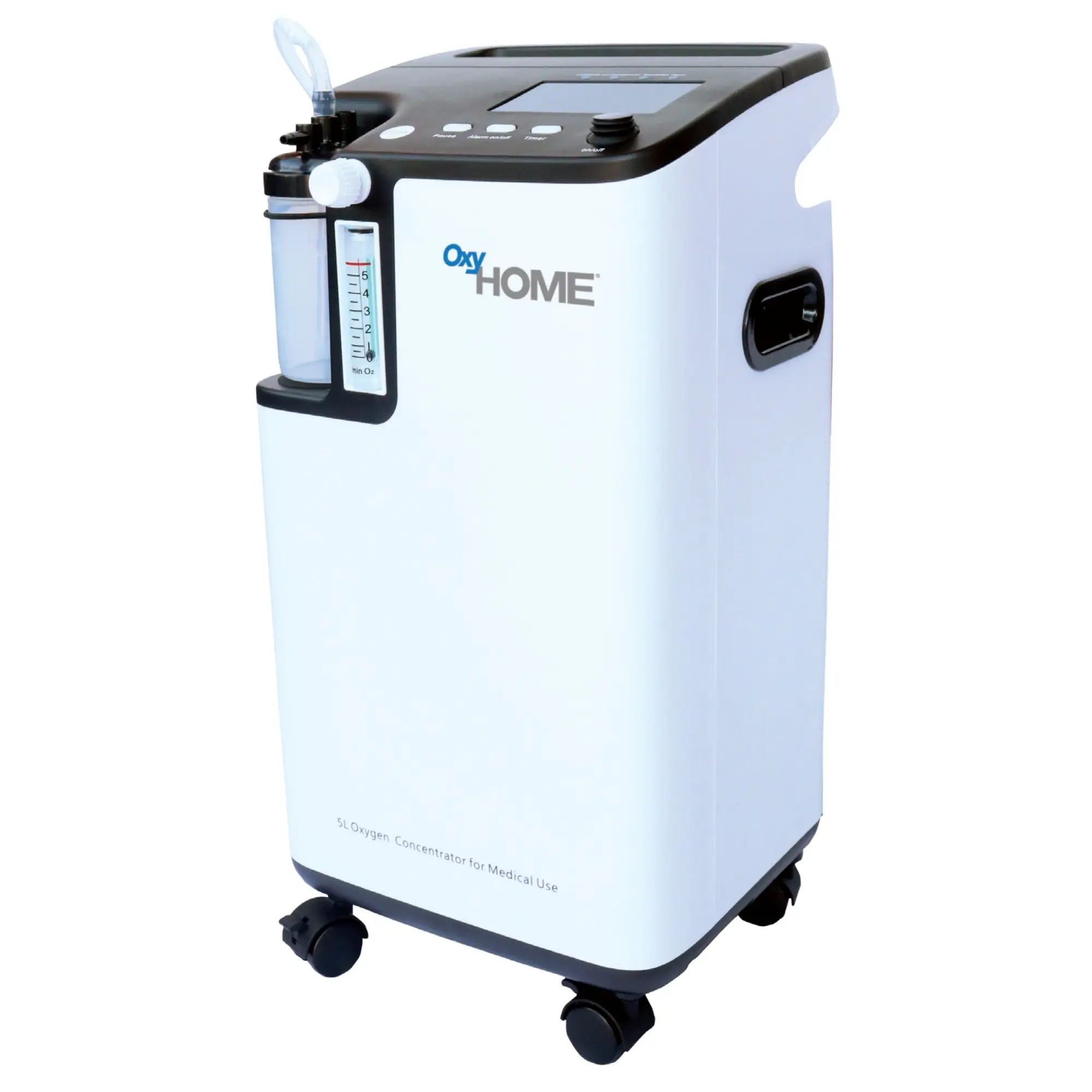can sometimes cause dryness, skin irritation, or mask leaks, especially when you’re new to treatment. These side effects are common and usually easy to manage with a few simple adjustments like improving humidification, cleaning habits, and finding the right mask fit.
This guide provides actionable solutions to these problems, drawing from peer-reviewed research and expert clinical guidance.
CPAP side effects often happen when airflow, pressure, or mask fit aren’t properly adjusted. Most of these issues—like dryness or irritation—stem from air leaks, humidity imbalance, or friction from worn-out cushions. Understanding these underlying causes helps you identify quick, practical fixes instead of feeling like you’re starting from scratch.
Our goal is to help you fix these common issues and make your therapy both comfortable and effective.
Common CPAP Side Effects & Simple Fixes
| Issue | Common Cause | What Helps | Products & Resources |
|---|---|---|---|
| Dry nose or congestion | Pressurized air dries nasal passages | Use heated humidification and saline spray | Humidifiers, Heated Tubes |
| Dry mouth | Mouth breathing or mask leaks | Try a chinstrap or switch to a full-face mask | Chinstraps, Full Face Masks |
| Skin irritation | Mask friction or dirty cushions | Use mask liners, clean daily and use moisturizer | |
| Mask leaks | Wrong size or loose headgear | Refit mask and replace worn parts | Headgears, Mask Cushions |
| Aerophagia (air swallowing) | Pressure too high | Adjust pressure settings or use BiPAP | BiPAP Machines |
| Claustrophobia or anxiety | Uncomfortable mask setup | Try minimal-contact nasal pillows and gradual acclimation | Nasal Pillow Masks |
1- Nasal Dryness & Congestion: What Works (humidification, fit, saline)
Waking up with a dry nose or feeling congested is a common complaint, and it's usually because the constant, pressurized air is drying out your nasal passages.
NCBI clinical research confirms that heated humidification consistently reduces dryness, congestion, and runny nose symptoms compared to using no humidity at all, and can even help boost nightly usage. An ERS study shows that the air flow can dehydrate the nasal mucous membranes, leading to inflammation and discomfort.
Here are four practical steps you can take to solve it:
-
Add or increase heated humidification. Using a heated humidifier is the most direct way to soothe your nasal passages. A foundational crossover study published in PubMed found that it significantly reduces nasal symptoms, which may help you use your therapy longer. If your CPAP has a humidifier, try turning up the heat and humidity setting. If it doesn't, adding one can make a world of difference. You can explore different CPAP humidifier chambers to find one compatible with your machine.
-
Keep the humidity stable with heated tubing. As warm, moist air travels down a standard tube in a cool room, it can form water droplets, a process called "rainout." NCBI studies confirm that a heated tube keeps the air temperature consistent all the way to your mask, ensuring you get the full benefit of the moisture. Popular options include the ClimateLineAir 11 for AirSense 11 users and the ClimateLineAir 10 for those with an AirSense 10.
-
Check for mask leaks and mouth breathing. If your mask doesn't seal properly or if you tend to breathe through your mouth at night, you lose the benefits of the humidified air. This escaping air can also cause significant dryness. According to the Sleep Foundation, ensuring a proper mask fit is crucial to prevent this. For mouth breathers, a chin strap or a full face mask might be a better option.
-
Consider a nasal saline spray before bed. For some extra relief, the Mayo Clinic suggests using an over-the-counter sterile saline nasal spray before putting on your mask. This simple step can help add moisture directly to your nasal passages before you even start your therapy for the night.

AirSense 11 & AirCurve 11 ClimateLineAir Heated Tube

ResMed ClimateLineAir Heated Tube for Airsense 10 and Aircurve 10 CPAP Machine

All in One Saline Nasal Spray by NeilMed NasaMist
2- Skin Irritation & Pressure Marks: Prevent, Protect, and Clean
If your mask is leaving red marks, causing a rash, or making your skin peel, you're dealing with one of the top predictors of non-adherence to CPAP therapy.
Over-tightened straps, worn-out mask cushions, or a reaction to the materials usually cause skin irritation. Interface problems create friction and pressure, which can result in everything from mild redness to contact dermatitis or, in rare cases, pressure necrosis.
Actionable Fixes for Soothing Your Skin:
-
Refit, Don't Overtighten: Your initial response to a leak might be to tighten the headgear more, but this only worsens pressure marks and can actually distort the cushion, creating more leaks (Respirology 2020). The cushion should rest gently on your face, not press aggressively. Pressure injuries can be avoided by checking your fit and replacing worn cushions regularly.
-
Create a Protective Barrier with Liners and Pads: The easiest way to reduce friction and absorb irritating sweat and facial oils is by placing a soft material between the mask and your skin. Mask liners and pads act as a barrier to distribute pressure more evenly and reduce contact dermatitis risk (JAAD Case Reports).
Protection Options: Explore our full mask liners collection, or targeted solutions like full-face liners, universal nasal liners, cushioning Gel pads (bridge), or the snugell gel nose pads.
-
Make Daily Cleaning a Habit: Grime, makeup, and skin oils rapidly break down the cushion material and host bacteria, which can cause skin issues like contact dermatitis. Wipe the mask cushion every morning to maintain its seal and reduce irritation.
Quick Cleaning: Try quick dry-cleaning options like specialized Snugell CPAP mask wipes or a gentle cleaner sanitizer spray.

-
Know When to Check for Allergies: If you develop a persistent, itchy rash (dermatitis) that doesn't clear up with cleaning and liners, you might have a rare sensitivity to the silicone or plastic materials used in the mask. Consult your sleep clinician, as you may need to switch to a mask made of a different material, such as gel or cloth.
3- Mask Choice, Leaks & Adherence (Picking the Right Interface)
One of the biggest factors that determines if you stick with CPAP is the mask interface you choose.
Oronasal (full-face) masks are associated with lower adherence and higher abandonment rates compared to nasal masks and nasal pillows, making the initial mask choice critical. Persistent leaks and other mask-related side effects are known predictors of long-term CPAP failure and residual daytime sleepiness, emphasizing the need to get the fit right (AJMC, 2021).
Choosing and Fixing Your Interface:
-
Start with Nasal or Nasal Pillow Masks: According to Pulmonology Advisor, clinicians typically recommend starting with a nasal mask or nasal pillow system when possible. Studies also consistently show that nasal interfaces tend to have better long-term adherence rates. Only switch to a full-face mask if chronic mouth breathing or nasal obstruction makes a nasal interface impossible.
Nasal Options: Popular choices include the minimal contact AirFit N30i, the lightweight AirFit P10, the subtle AirFit N30, and the streamlined F&P Evora Nasal.

ResMed AirFit N30i Nasal CPAP Mask

ResMed AirFit P10 Nasal Pillow CPAP Mask

ResMed AirFit N30 Nasal CPAP Mask
If You Need Full-Face: If you must use a full-face style, consider widely used models like the AirFit F20.
-
Switch Styles if Leaks Persist: If you have tried everything and still struggle with significant leaks or multiple mask-related side effects, the Journal of Thoracic Disease advises consulting your provider about trying a totally different interface design.
-
The Micro-Checklist for Leak Control: Addressing a leak is more about technique than force. Never overtighten your mask to compensate.

ResMed AirFit F20 Full Face CPAP Mask
- Clean the cushion nightly to remove face oils that cause slippage.
- Replace worn parts, as cushions degrade over time and lose their seal.
- Adjust the headgear only after you are lying down and the machine pressure is running.
- Consider mask liners (discussed in the Skin Irritation section) to help fill minor gaps and improve the seal without excessive tightening.
4- Aerophagia, “Rainout,” and Trouble Exhaling (Targeted Fixes)
These three issues often feel like a sign that CPAP just isn't working, but they each have clear technical solutions.
Aerophagia (swallowing air) is often related to high treatment pressure or mouth leaks, while "rainout" is simply condensation, and difficulty exhaling can often be solved with comfort features.
Aerophagia: When Air Gets into Your Stomach
Aerophagia causes painful bloating, burping, and gas, and is essentially the swallowing of pressurized air. A JCSM Medical literature notes that it is often connected to mask interface issues, high-pressure settings, or a user frequently swallowing to equalize pressure
-
Control Leaks and Mask Fit: Leaks, especially from the mouth, can cause a person to swallow air involuntarily. Ensure your mask fits correctly and consider a chin strap or full-face mask if mouth breathing is the primary issue (as discussed in the Mask Choice section above).
-
Discuss Pressure Optimization: If the issue is persistent and you have a high treatment pressure, talk to your sleep clinician about potentially switching to an Auto-CPAP (APAP) machine, which automatically adjusts pressure throughout the night. Your clinician may also consider enabling Pressure Relief features, which can sometimes help.
-
Optimize Your Sleep Position: Try sleeping on your side. In some cases, changing your sleeping position can help reduce the amount of air swallowed. You can use specific CPAP pillows designed to accommodate your mask and maintain proper neck and jaw alignment, which can reduce leaks and muscle tension.
Pillow Support: Check out options like the Best in Rest Pillow or the Snugell CPAP Pillow.
Rainout: Stop the Water in Your Hose
Rainout refers to water droplets or condensation collecting inside your CPAP tube, mask, or nose. This happens when the warm, humid air leaving your machine cools down rapidly inside the hose, a common occurrence in cold bedrooms.
-
Use Heated Tubing (The Primary Fix): The most effective solution is upgrading to a heated tube (like the ones linked in the Dryness section above). The temperature control prevents the warm, moist air from cooling below its dew point, keeping the humidity in the air rather than condensing into water.
-
Lower the Humidifier Setting: If heated tubing isn't an option, try turning the heat or humidity setting down by one notch. Less humidity means less water is available to condense.
-
Insulate Your Hose: For extra protection, especially if you travel, using a tube cover adds an insulating layer around your standard hose, helping to keep the air inside warm until it reaches your mask.
Insulation: Add a Snugell universal CPAP hose tubing cover to your setup.
-
Keep the Device Below Your Head: Placing your CPAP machine below the level of your head prevents any condensation that does form from draining back toward your mask and face.
Exhaling Against the Pressure
Feeling like you are struggling to push air out against the machine's pressure can be uncomfortable, especially for new users. This feeling of "breath holding" is a matter of comfort, and your machine has features designed to help.
-
Engage Comfort Features: Many modern CPAP machines offer expiratory pressure relief (EPR, C-Flex, or A-Flex). This technology temporarily drops the pressure the moment you start to exhale, making it feel more natural. While research is mixed on whether this improves long-term adherence, it is a valuable tool for immediate comfort and acclimatization.
-
Use the Ramp Feature: Set it to start your pressure at a low, comfortable level. The pressure will then slowly ramp up to your prescribed setting over a set period (usually 5 to 45 minutes), allowing you to fall asleep before the full pressure begins.
-
Maintain Your Equipment: Lastly, ensure your tubing is clean and free of blockages. Build-up inside the hose can restrict air flow and make breathing feel more difficult.
Maintenance: A Snugell CPAP tube and mask cleaning brush set is essential for routine hygiene.
5- Claustrophobia, Anxiety & Sleep Fragmentation (acclimation tactics)
It's completely normal to feel claustrophobic, anxious, or unable to fall asleep when wearing the mask for the first time.
Claustrophobia and associated insomnia are common early challenges; structured desensitization, proper mask choice, and consistent sleep hygiene routines are the best tools for overcoming them. These are behavioral hurdles, and you can train your brain to accept the therapy.
Overcoming the Mental Hurdles:
-
The Stepwise Desensitization Plan: The Mayo Clinic suggests a gradual acclimation process to make the mask feel less foreign. Do not simply put the mask on and expect to sleep immediately.
Step 1 (Daytime): Wear the mask only, without turning the machine on, for 10 to 20 minutes while awake (e.g., watching TV). Practice slow, deep breathing.
Step 2 (Low Pressure): Use the mask during short naps or while resting, with the CPAP machine turned on and the Ramp feature engaged (this starts the pressure low).
Step 3 (Full Night): Once comfortable, begin wearing the mask for the full duration of the night. Track how long you use it each night, celebrating small improvements.
-
Choose a Minimal Mask Interface: For many users, claustrophobia is triggered by a large mask covering the entire face. If your mouth-breathing permits, switch to the lowest-profile option possible, such as nasal pillows or a minimal contact nasal mask (see mask options in the Mask Choice section above).
-
Address Anxiety Related to Hygiene: For some, the anxiety relates to the cleanliness of the device. Establishing a simple, non-complicated cleaning routine can provide peace of mind and is key to long-term mask adherence.
Simple Routine: You can find all the necessary cleaning supplies in our collection of CPAP cleaning supplies.
Optional Devices: If you prefer automated or deep-cleaning methods, explore devices like the Cspring RediClean or the UVC-LED Liviliti Paptizer, always following the manufacturer's directions.
When to Revisit Pressure/Mode or Seek Clinical Help
While most CPAP side effects are easily fixed with a product or a simple adjustment, some issues signal that your prescribed pressure, machine type, or mask interface needs professional review.
Persistent side effects like severe leaks, recurrent nosebleeds, worsening skin rashes, or severe aerophagia warrant an immediate review by your sleep clinician or doctor. These symptoms can indicate a problem with the overall efficacy or tolerance of your current settings.
Checklist: Contact Your Sleep Clinician If You Have:
| ✔️ | Condition | Description |
|---|---|---|
| ⬜ | Residual Apneas or Leaks | Your sleep machine data (AHI) remains high, or loud snoring and witnessed apneas continue despite using the CPAP. |
| ⬜ | Severe Bloating or Pain | You experience painful bloating (aerophagia) that doesn’t improve with side-sleeping or leak management. |
| ⬜ | Persistent Skin Issues | You have severe redness, weeping, or a persistent rash (possible contact dermatitis) that isn’t resolved by cleaning, liners, or adjusting the headgear. |
| ⬜ | Nosebleeds or Infections | You experience recurrent nosebleeds, ear pain, or sinus infections that could be related to pressure or humidity settings. |
| ⬜ | Eye Irritation | Air leaks repeatedly blow into your eyes, causing dryness or discomfort. |
| ⬜ | Panic or Insomnia | Claustrophobia, panic attacks, or persistent insomnia prevent you from using the machine for at least four hours per night. |
| ⬜ | Unusual Breathing Patterns | If your machine or doctor notes new or ongoing central apneas, schedule a follow-up to rule out complex sleep apnea (based on AASM guidance). |
It is important to understand when an at-home adjustment is not enough and professional intervention is required. According to patient education resources, your provider needs to know if comfort issues persist.
Persistent or worsening symptoms after adjusting humidity, fit, or pressure should always be discussed with your sleep clinician. A brief data review from your CPAP machine can reveal if a pressure change or mode adjustment is needed.
Final Thoughts
You have taken the most important step toward better sleep and better health by starting CPAP therapy. While the initial weeks may present some comfort challenges like leaks, dryness, or claustrophobia, nearly every side effect has a simple, evidence-based solution.
We hope this guide has given you the confidence and the specific tactics you need to resolve these issues tonight, ensuring you can stick with the therapy that is proven to protect your heart and restore your energy.
Don't give up: consistent adherence leads to the life-changing benefits you were prescribed CPAP to achieve.
FAQs
What are the most common side effects of using a CPAP machine?
The most frequently reported side effects include dry mouth, dry nose, nasal congestion, mask leaks, skin irritation (red marks or rashes), and pressure discomfort while exhaling. These issues, along with feelings of claustrophobia or anxiety, are most common during the first few weeks of therapy but tend to resolve quickly once small adjustments are made to your equipment or routine.
How do I stop dry mouth when using CPAP?
Dry mouth is usually caused by insufficient moisture in the air or breathing through your mouth. The primary solution is to use your heated humidifier and increase the setting until the dryness disappears. If you breathe through your mouth, try using a chin strap to keep your mouth closed, or switch to a full-face mask that covers both your nose and mouth.
Why does CPAP make my nose dry or congested?
The constant flow of air, especially if unheated or unhumidified, can dry out the mucous membranes in your nasal passages, leading to irritation, dryness, and inflammation. Increasing the heat and humidity on your CPAP machine is the best evidence-based fix, often supplemented by a saline nasal spray or rinse before bedtime.
Should I use a humidifier or heated tubing with my CPAP?
Yes, almost all CPAP users benefit from heated humidification to prevent dryness and congestion, which is a major barrier to adherence. You should also use heated tubing to prevent the warm, moist air from cooling and condensing into water droplets (rainout) before it reaches your mask, ensuring you get the full benefit of the moisture.
Why is water collecting in my CPAP hose or mask?
This issue, known as "rainout," occurs when the warm, humidified air traveling from your machine enters a cooler environment (like a cold bedroom or an uninsulated tube) and condenses back into liquid water. The fix is to use a heated tube, which maintains a consistent temperature all the way to your mask, or to slightly lower the humidity setting on your machine.
How do I fix leaks from my CPAP mask?
Mask leaks are primarily caused by an improper fit, a worn-out cushion, or wearing the mask too tightly. Do not overtighten your headgear; instead, ensure your mask is correctly sized, gently adjust the straps only while lying down and with the machine running, and regularly replace the cushion according to the manufacturer's schedule.
What’s the best way to prevent skin irritation or red marks from my CPAP mask?
Skin irritation is typically due to friction, pressure, or accumulated face oils and grime. You can prevent it by daily cleaning the mask cushion, ensuring the mask is not overtightened, and using a mask liner or gel pad to create a protective, moisture-wicking barrier between the mask silicone and your sensitive facial skin.
How tight should my CPAP mask be?
Your mask should be just tight enough to form a comfortable seal and prevent major air leaks while you are lying down with the machine running. If the mask leaves deep, lasting red marks or feels painful, it is too tight. You should be able to slide one or two fingers easily underneath the straps.
Why do I wake up bloated or gassy after using CPAP?
Waking up bloated or gassy, a condition called aerophagia (swallowing air), can be caused by swallowing pressurized air, often due to high-pressure settings or mouth leaks. Try managing mouth leaks first, side-sleeping, and then consult your clinician about enabling comfort features like EPR or switching to an Auto-CPAP (APAP) machine, which adjusts pressure automatically.
How can I make it easier to exhale against the CPAP pressure?
Modern CPAP machines often include a comfort feature (variously called EPR, C-Flex, or A-Flex) that temporarily lowers the pressure the moment you start to exhale. Ask your clinician to enable this expiratory pressure relief feature. Using the Ramp feature, which starts the pressure low and gradually increases it, can also help you fall asleep more comfortably.
How do I get used to wearing a CPAP mask without feeling claustrophobic?
Overcoming claustrophobia requires a gradual desensitization plan. Start by wearing the mask without the machine on for short periods during the day while you are reading or watching TV. Once comfortable, introduce the machine with the low-pressure Ramp feature enabled for short naps, and finally, wear it for the entire night.
Can CPAP cause anxiety or make it harder to fall asleep?
Yes, it is common for new users to experience initial anxiety, difficulty falling asleep (insomnia), or a sensation of panic due to the unfamiliar mask. Using a minimal mask interface, practicing the desensitization steps mentioned above, and integrating the mask into a consistent, relaxing bedtime routine can significantly reduce these mental hurdles.
How long does it take to adjust to CPAP therapy?
Most users experience the most significant adjustment period within the first two to four weeks. During this time, you may troubleshoot mask leaks, dryness, and comfort. After the first month, adherence usually stabilizes, and the majority of side effects fade as your body adapts to the consistent air pressure.
Why do I still feel tired even when I use my CPAP every night?
If you are using your CPAP consistently (ideally 7+ hours per night) but still feel exhausted, you should talk to your clinician. The issue could be that your mask is leaking significantly (making the therapy ineffective), your pressure setting needs adjustment, or there may be another underlying cause for your persistent fatigue unrelated to your sleep apnea.
Can CPAP cause headaches, ear pressure, or dizziness?
While rare, some users report headaches, ear pressure, or a feeling of dizziness. Ear pressure is often related to blockages or congestion, which can be managed with humidification and saline. If these symptoms are severe or persistent, particularly if they are accompanied by sinus pain, you should consult your sleep specialist or primary care doctor.
How do I properly clean and maintain my CPAP equipment to avoid irritation or infections?
You should clean your mask cushion daily with a wipe or mild soap and water to remove oils that degrade the silicone and harbor bacteria. The headgear, tubing, and humidifier chamber should be washed weekly. Regular maintenance and replacement of cushions, filters, and tubing are essential to maintain the seal and hygiene.
Are CPAP cleaning machines or sprays safe to use?
Most CPAP manufacturers recommend daily wiping of the cushion and weekly washing of all components with mild soap and water. If you choose to use third-party cleaning machines (like ozone or UV devices) or specialty sprays, ensure they are certified and always follow the manufacturer's directions for both the cleaner and your specific CPAP machine model.
When should I talk to my doctor about CPAP side effects?
You should talk to your sleep clinician if any side effect is so severe that it prevents you from using the CPAP for at least four hours per night, or if you experience recurrent nosebleeds, a persistent rash (dermatitis), severe aerophagia, or if you notice your AHI is still high despite consistent use.
Can I use sleeping pills or alcohol while using CPAP?
You should never use sleeping pills or consume alcohol without consulting your doctor first, especially when you have sleep apnea. Both substances can worsen your sleep apnea and respiratory function, potentially increasing the severity of breathing problems while you sleep, even with the CPAP on.
How can I travel comfortably with my CPAP machine without interrupting therapy?
Traveling is easy with modern CPAP devices. Always pack your machine in a padded carry-on bag, as it is considered medical equipment by TSA and airlines. For ultimate portability, consider smaller, dedicated travel CPAP machines. Remember to bring distilled water for your humidifier or use bottled water only when absolutely necessary, especially internationally.
References
-
Ahmad, Z., Venus, M., Kisku, W., & Rayatt, S. (2012). A case series of skin necrosis following use of non-invasive ventilation pressure masks. International Wound Journal, 10(1), 87–90. https://doi.org/10.1111/j.1742-481x.2012.00948.x
-
CPAP machines: Tips for avoiding 10 common problems. (n.d.-a). Mayo Clinic. https://www.mayoclinic.org/diseases-conditions/sleep-apnea/in-depth/cpap/art-20044164
-
CPAP machines: Tips for avoiding 10 common problems. (n.d.-b). Mayo Clinic. https://www.mayoclinic.org/diseases-conditions/sleep-apnea/in-depth/cpap/art-20044164
-
De Andrade, R. G. S., Piccin, V. S., Nascimento, J. A., Viana, F. M. L., Genta, P. R., & Lorenzi-Filho, G. (2014). Impact of the type of mask on the effectiveness of and adherence to continuous positive airway pressure treatment for obstructive sleep apnea. Jornal Brasileiro De Pneumologia, 40(6), 658–668. https://doi.org/10.1590/s1806-37132014000600010
-
Gavidia, M. (2021, January 22). How CPAP Masks Impact Adherence, Sleepiness in Long-Term Users. AJMC - Managed Care News, Research, and Expert Insights. https://www.ajmc.com/view/how-cpap-masks-impact-adherence-sleepiness-in-long-term-users
-
Ghadiri, M., & Grunstein, R. R. (2020a). Clinical side effects of continuous positive airway pressure in patients with obstructive sleep apnoea. Respirology, 25(6), 593–602. https://doi.org/10.1111/resp.13808
-
Ghadiri, M., & Grunstein, R. R. (2020b). Clinical side effects of continuous positive airway pressure in patients with obstructive sleep apnoea. Respirology, 25(6), 593–602. https://doi.org/10.1111/resp.13808
-
Massie, C. A., Hart, R. W., Peralez, K., & Richards, G. N. (n.d.). Effects of Humidification on Nasal Symptoms and Compliance in Sleep Apnea Patients Using Continuous Positive Airway Pressure. CHEST Journal, 116(2), 403–408. https://doi.org/10.1378/chest.116.2.403
-
Parthasarathy, S. (2008a, October 15). Mask interface and CPAP adherence. https://www.ncbi.nlm.nih.gov/pmc/articles/PMC2576320/
-
Parthasarathy, S. (2008b, October 15). Mask interface and CPAP adherence. https://www.ncbi.nlm.nih.gov/pmc/articles/PMC2576320/
-
Ryan, S., Doherty, L. S., Nolan, G. M., & McNicholas, W. T. (2009, October 15). Effects of Heated Humidification and Topical Steroids on Compliance, Nasal Symptoms, and Quality of Life in Patients with Obstructive Sleep Apnea Syndrome Using Nasal Continuous Positive Airway Pressure. https://www.ncbi.nlm.nih.gov/pmc/articles/PMC2762712/
-
Sleep apnea. (2025, July 25). Cleveland Clinic. https://my.clevelandclinic.org/health/diseases/8718-sleep-apnea
-
Summer, J. V., & Summer, J. V. (2025, July 9). CPAP Dry Mouth: How to stop it. Sleep Foundation. https://www.sleepfoundation.org/cpap/cpap-dry-mouth
-
Virk, J. S., & Kotecha, B. (2016). When continuous positive airway pressure (CPAP) fails. Journal of Thoracic Disease, 8(10), E1112–E1121. https://doi.org/10.21037/jtd.2016.09.67
-
Wilbanks, J. (2024, December 12). Sleep Education - American Academy of Sleep Medicine. Sleep Education. https://sleepeducation.org/
-
Yu, C., Luo, C., Liu, Y., & Wu, H. (2012). The effects of a heated humidifier in continuous positive airway pressure titration. Sleep and Breathing, 17(1), 133–138. https://doi.org/10.1007/s11325-012-0661-y
-
Koutsourelakis, I., Vagiakis, E., Perraki, E., Karatza, M., Magkou, C., Kopaka, M., Roussos, C., & Zakynthinos, S. (2010). Nasal inflammation in sleep apnoea patients using CPAP and effect of heated humidification. European Respiratory Journal, 37(3), 587–594. https://doi.org/10.1183/09031936.00036910
-
Arrington, K. C., Glass, L. D., & Scheinman, P. L. (2021). Do not lose sleep over mask allergic contact dermatitis. JAAD Case Reports, 19, 100–102. https://doi.org/10.1016/j.jdcr.2021.11.013
-
Managing Mask-Related Side Effects: A Key to CPAP Therapy Adherence. (2025, Feb 21). Pulmonology Advisor. https://www.pulmonologyadvisor.com/features/managing-mask-related-side-effects-a-key-to-cpap-therapy-adherence/
-
Journal of Clinical Sleep Medicine. JCSM. https://jcsm.aasm.org/



